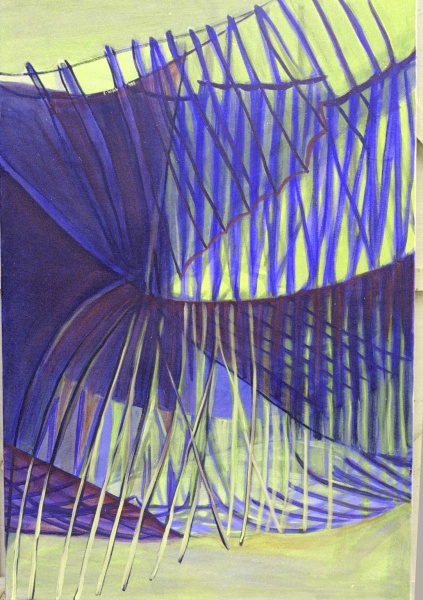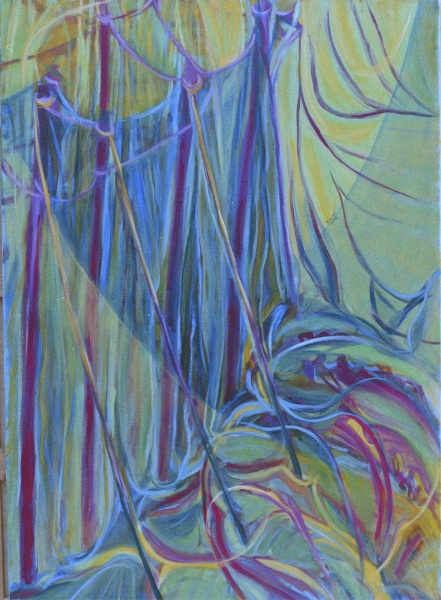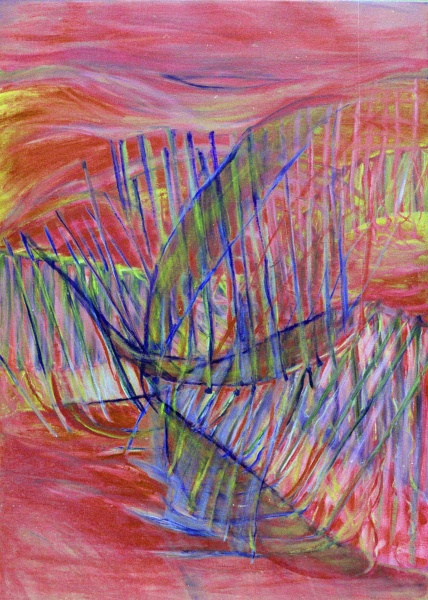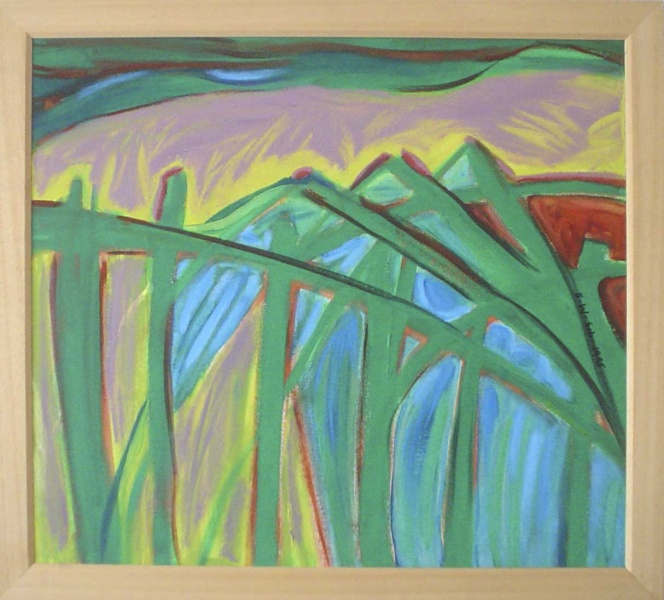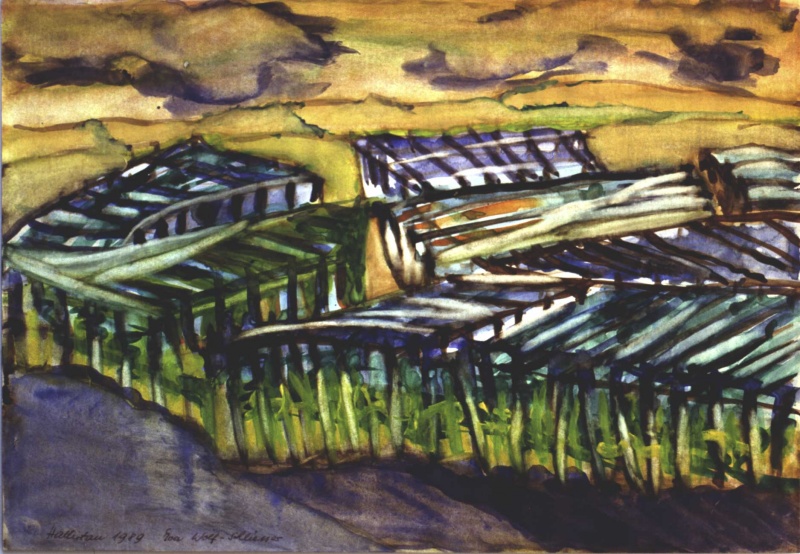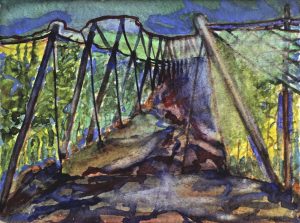
Soft hills strung with metre-high wooden posts and wire, tinged green in summer by tendrils and umbels and interspersed by old cart tracks – this describes the hop landscape of the Hallertau.
Hops have been cultivated for centuries here in the world’s largest hop growing region. To this day, the plant still shapes the landscape and likewise the identity and culture of the people who live there.
For Eva Wolf-Schliesser, the hop landscape with its seasonal variations in vegetation phases and varied lighting scenes is an almost never-ending source of pictorial motifs: “The hop poles stand bare in the hop field in autumn and winter, with the snow, the cold and the wind for neighbours. Little by little, the hop plants bedeck them in spring and summer. The sun and the rain foster the growth of these vines.”
The hop series by Eva Wolf-Schliesser comprises well over 100 watercolours and oil paintings. No other artist has taken this motif as an artistic subject.
The portrayals of her hop paintings are not merely impressions of the landscape of her birth, but on a meta level depict the artist’s intense analysis of the relationship between nature and technology on the one hand and culture and nature on the other.
Eva Wolf-Schliesser raises questions concerning the eternal struggle between man and nature for living space: Does the creeping plant control the earth, the animal and the human being and rob them of their livelihoods? Or vice versa – is nature cultivated by the technology of the hop industry? When contemplating Eva Wolf-Schliesser’s hop landscapes, at first one’s gaze may become lost in the aesthetically pleasing images.
The landscapes range from naturalistic mood reduction to abstract impressions of the motif and offer a multifaceted spectrum of colours. The expressive and varied colour palette lends the motif an intense mood, into which the observer dives kaleidoscopically, discovering the magical world of hops. The observer resurfaces and is confronted with another level of perception, where he has to decide: Nature or technology? With Eva Wolf-Schliesser, the two antagonisms enter into a symbiosis.
The juxtaposition of the basic subjects “nature and technology” also refers to Eva Wolf-Schliesser’s philosophical analysis of the construction of the reality of perception. In combination with her naturalistic to abstract pictorial language and her expressionistic colour composition there is an open perceptive structure, which creates space for many individual possibilities of perception in its contemplation: If one takes into account the light conditions of the course of the day, such as the violet-red sunrise, the gleaming light of midday, the milky twilight and the darkness of the night, the hop garden shows a subtle palette of colours. The sum of all these colours […] makes the hop garden an expressive body that admits many possibilities for propositions.”
The interplay between nature and technology is illustrated in the works of Eva Wolf-Schliesser by a further aspect: The artist’s many hop poles and bracing wires characterise her artistic language to such an extent that her geometric formal arrangements, as a formal and compositional basic structure, run like a common thread through her hop series: When the running wire is tensioned, the field is tilled and the hop vines are pruned, the hop plant surges upwards, snaking up the running wire. Yellow-green wraps around the rust red of the wire. The hop grows and grows, an ordered chaos of different shades of green, red and yellow merges to become a living natural body.”
In this context, hop landscapes also have a transcendent and irrational connotation: “Under the blue of the sky or the yellow of the sun or the grey of the rain, the hop plant rests on the pillars of the scaffolding temple.”
Text: Lena Berkler, M. A.

